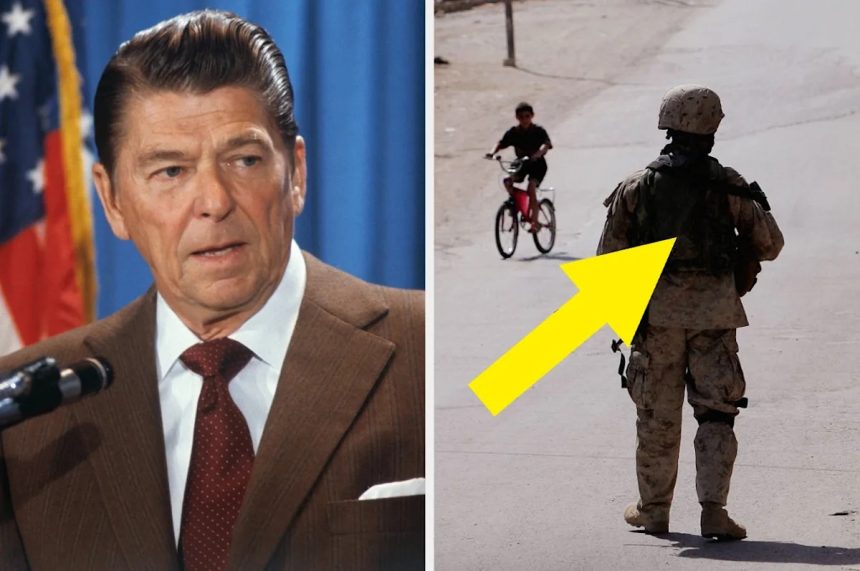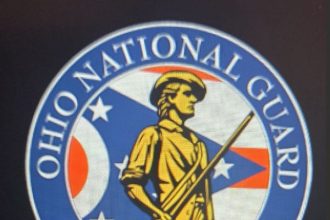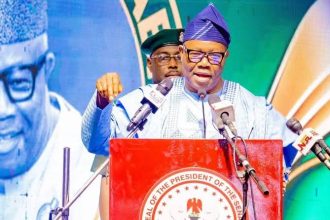Throughout American history, presidents have obviously made decisions that reshaped not just policy but people’s lives. When u/Strange_Juice2778 asked, “What is the worst mistake a US president has ever made?” people did not hold back. From James Buchanan’s hands-off slide into secession to “Reaganomics” and the Iraq War, the responses spanned centuries. Here’s what they had to say — plus what actually happened, why it mattered, and how those choices changed the country — in chronological order:
1. “Andrew Jackson green-lighted the Trail of Tears, and its execution took place under Martin Van Buren. For intentions being bad and the act itself being so evil, it ranks extremely high on the list of worst acts by two presidents.”
Xinhua News Agency / Getty Images
President: Andrew Jackson
Years in Office: 1829–1837
Preceded by: John Quincy Adams
Succeeded by: Martin Van Buren
What Happened: President Andrew Jackson’s policy of forced displacement, culminating in the Indian Removal Act of 1830, stands as one of the darkest governmental acts against Native American populations. The Act authorized the President to negotiate treaties to relocate tribes, primarily the Five Civilized Tribes, from the fertile agricultural lands of the Southeast to unsettled lands in the West. The administration was driven by white settlers’ intense desire to seize these lands, but Jackson publicly argued the removal would benefit both parties by ending jurisdictional conflicts.
Crucially, Jackson’s rhetoric revealed the underlying racial ideology, championing replacing the land occupied by “a few savage hunters” with a “dense and civilized population”. This justification provided the moral cover for a catastrophic humanitarian policy. The policy led directly to immense suffering and death, most famously during the forced relocation of the Cherokee Nation, known as the Trail of Tears, which resulted in the deaths of thousands due to starvation, disease, and exposure.
The mistake established a long-lasting and devastating precedent: federal treaties with sovereign Native Nations could be unilaterally ignored or forcefully overridden when state interests and economic expansion demanded it. This enshrined a policy of systematic dispossession that continued for decades and demonstrated how political expediency relies on the dehumanization of victims.
2. “Throw in Harrison’s refusal to dress properly for his inauguration and dying of pneumonia 30 days later.”

Smith Collection / Getty Images
President: William Henry Harrison
Years in Office: 1841
Preceded by: Martin Van Buren
Succeeded by: John Tyler
What Happened: William Henry Harrison holds the record for the shortest presidential term — just 30 days — a tenure tragically cut short by a self-inflicted error. Harrison, at 68, was eager to prove his vigor on Inauguration Day, March 4, 1841. On a frigid, inclement day, he chose to deliver the longest inaugural address, at 8,445 words, in history, without wearing a coat or hat, exposing himself to the severe weather for nearly two hours.
He fell ill shortly thereafter, and though medical historians debate the exact cause (pneumonia or enteric fever), the traditional account holds the exposure responsible for the illness that killed him exactly one month into his term. Harrison’s unforced error abruptly ended his policy agenda before it could begin.
His self-inflicted demise created the first-ever crisis of presidential succession, as the Constitution was vague regarding whether Vice President John Tyler became the President or merely an “Acting President.” Tyler decisively insisted on being sworn in fully, setting the crucial precedent that the Vice President assumes the full powers and title of President upon the predecessor’s death, fundamentally altering the balance of power and initiating a dramatic political shift mid-term.
Related: Older People Are Spilling The Details On Almost Every Facet Of Life, And I Can’t Stop Reading
3. “Buchanan letting the South secede and doing effectively nothing during the last four months of his presidency, waiting for Lincoln to take over and inherit the biggest mess in American history.”

Mashuk / Getty Images
President: James Buchanan
Years in Office: 1857–1861
Preceded by: Franklin Pierce
Succeeded by: Abraham Lincoln
What Happened: James Buchanan’s presidency is historically criticized not for a rash action, but for a devastating policy of inaction and constitutional paralysis during the crisis of Southern secession. A Northern Democrat, Buchanan maintained a highly legalistic, passive view, asserting the Constitution did not grant the president authority to coerce a sovereign state back into the Union. He provided verbal assurances to South Carolina congressmen that he would maintain the military status quo at federal forts, yet he simultaneously refused to decisively reinforce Fort Sumter, fearing any action would provoke conflict. Evidence shows he adopted a policy of appeasement, instructing the commander at Charleston to “yield to necessity and make the best terms in your power” rather than expose his men in a “hopeless conflict”.
His laxity gave the nascent Confederacy crucial weeks to organize, seize armories, and establish its government and military apparatus. When Buchanan finally attempted one overt action — sending the unarmed merchant ship Star of the West to resupply Fort Sumter — it was fired upon, and he immediately reverted to “a policy of inactivity that continued until he left office”. His own Secretary of State, Lewis Cass, resigned in disgust, believing Buchanan should have asserted federal authority.
The long-term damage of this failure was profound: Buchanan intentionally left the mess for his successor, gifting Lincoln the moral high ground. By leaving the forts unreinforced but unclaimed, Buchanan ensured that when the Confederates finally fired on Fort Sumter in April, they initiated the aggression against a clear symbol of federal authority, providing Lincoln with the casus belli (justification for war) needed to unify a previously divided North for the fight to preserve the Union.
4. “Lincoln picking Johnson over Hamlin or someone else. That was a defining moment for America, for sure.”

Donaldson Collection / Getty Images
President: Abraham Lincoln
Years in Office: 1861–1865
Preceded by: James Buchanan
Succeeded by: Andrew Johnson
What Happened: Abraham Lincoln’s choice to replace his sitting Vice President, Hannibal Hamlin, with Andrew Johnson for his 1864 re-election is considered one of the most consequential political gambles in US history. Lincoln’s goal was to promote national unity during the Civil War, creating a Union ticket by selecting Johnson, a Southern Democrat who was the only senator from a seceded state to remain loyal to the Union. This choice replaced Hamlin, a staunch abolitionist and Radical Republican ally, with a man who was wholly unprepared and ideologically opposed to the aims of racial equality and robust federal protection for formerly enslaved people.
The catastrophic consequence became apparent just six weeks into their second term: Lincoln was assassinated. This thrust Andrew Johnson into the highest office. Lincoln, a master political operator, likely chose Johnson, believing he could manage the process of Reconstruction himself, underestimating the immediate vulnerability of his own life and overestimating his control over the political fallout.
The replacement of an abolitionist ally with a Southern Democrat instantly pivoted the approach to Reconstruction, away from prioritizing civil rights and federal protection toward prioritizing quick, lenient political reintegration of former Confederates. This choice directly set the stage for the intense, destructive executive-legislative conflict over Reconstruction and laid the groundwork for Johnson’s subsequent policies that fundamentally undermined civil rights for freedpeople.
5. “Andrew Johnson really needed to deal with the former Confederates better.”

Stock Montage / Getty Images
President: Andrew Johnson
Years in Office: 1865–1869
Preceded by: Abraham Lincoln
Succeeded by: Ulysses S. Grant
What Happened: Andrew Johnson’s Reconstruction approach represents a monumental setback for racial equality, functionally undermining the Union’s victory. Johnson believed the war had been fought solely to preserve the Union, not to revolutionize Southern society. His lenient plan restored political rights and amnesty to many ex-Confederate leaders, who quickly regained power in local and state governments.
Emboldened by Johnson’s support, Southern states immediately enacted the “Black Codes” in 1865 and 1866. These laws were specifically designed to replace the social controls of slavery and assure the continuance of white supremacy. Provisions created economic re-enslavement (vagrancy laws forcing people of color into hard labor on farms), restricted legal rights (prohibiting testimony against white persons in court), and banned political participation.
Johnson repeatedly vetoed congressional efforts to establish federal protections for freed people. His blatant obstruction was undeniable proof that Southern states were attempting to restore slavery in all but name, which provided the political justification for congressional Republicans to take control of Reconstruction and draft the 14th Amendment. However, Johnson’s leniency and the rapid implementation of the Black Codes laid the social and ideological groundwork for the subsequent Jim Crow era that set back racial equality for generations.
6. “Teddy Roosevelt shouldn’t have tried for a third term — he led to Woodrow Wilson getting the Oval Office.”

Topical Press Agency / Getty Images
President: Theodore Roosevelt
Years in Office: 1901–1909
Preceded by: William McKinley
Succeeded by: William Howard Taft
What Happened: Theodore Roosevelt’s attempt to secure a third term, following the nearly two full terms he had already served, led directly to one of the most defining political shifts of the early 20th century. Dissatisfied with his successor, William Howard Taft, Roosevelt mounted a challenge in 1912. Failing to win the Republican nomination, Roosevelt chose to run as a third-party candidate under the Progressive, or “Bull Moose,” banner.
The social weather was highly receptive to progressive ideas, but the result was the fracturing of the traditional conservative vote. Roosevelt’s independent run split the Republican electorate between himself and Taft.
This political error guaranteed victory for the Democratic candidate, Woodrow Wilson, who won the presidency in 1913 after Taft’s single term with only 41.8% of the popular vote. Roosevelt’s decision destroyed his own party’s unity and enabled Wilson, who won through the fracture, to fundamentally reshape US economic policy (e.g., establishing the Federal Reserve) and, most consequentially, lead the nation into the complex conflicts of World War I.
7. “Not enough Woodrow Wilson here. This one’s not strictly his fault, but he was stricken by the Spanish flu and unable to argue for a more even-handed Treaty of Versailles, leaving the French to push their vengeful agenda of billions in reparations from Germany — and we all know how that ended. His doctor lied about Wilson’s condition when the more prudent approach would’ve been to request talks to pause until he was fully healthy again.”

Mirrorpix / Getty Images
President: Woodrow Wilson
Years in Office: 1913–1921
Preceded by: William Howard Taft
Succeeded by: Warren G. Harding
What Happened: President Woodrow Wilson’s physical decline during the critical negotiation of the Treaty of Versailles following World War I had profound and devastating consequences for the stability of Europe. Wilson was the champion of a moderate “peace without victory,” but his health failed at the most crucial time; he fell ill during the negotiations and later suffered a massive, concealed stroke upon returning to the US.
His compromised physical and mental state severely limited his ability to forcefully advocate for compromise or push back against the punitive demands of the French and others. The French insisted on harsh terms, demanding massive reparations from Germany for the total cost of the war. The extent of the illness was concealed by his doctor and wife, creating an unprecedented constitutional crisis where executive decisions were filtered through an unelected intermediary.
Wilson’s failure to secure a balanced treaty resulted in the imposition of billions in payments and severe territorial losses on post-WWI Germany. This crippling financial strain led to hyperinflation, economic depression, and intense national humiliation. This extreme hardship created the ideal political and social environment for extremist movements, most notably the National Socialist (Nazi) Party, to rise by promising to overturn the treaty, tragically and directly linking Wilson’s crisis to the economic and political conditions that eventually led to the outbreak of World War II.
Related: 17 Millennial Trends That Are No Longer “Cool,” According To Gen Z
8. “Warren G. Harding had the Teapot Dome scandal, which was naked corruption. He’s lucky he passed away when he did, or he had a solid chance of being the first president to be jailed.”

Fpg / Getty Images
President: Warren G. Harding
Years in Office: 1921–1923
Preceded by: Woodrow Wilson
Succeeded by: Calvin Coolidge
What Happened: Warren G. Harding’s administration was permanently tainted by a level of corruption that shocked the nation, primarily centered around the Teapot Dome scandal. The scandal involved Interior Secretary Albert Fall secretly leasing valuable federal oil reserves — including Teapot Dome, Wyoming, and Elk Hills, California — to private oil companies in exchange for substantial cash bribes, representing a clear misuse of public resources for private gain.
While Harding was never directly implicated in taking bribes, his disastrous lack of judgment in appointing corrupt cronies, known as the “Ohio Gang,” created the environment for the corruption. Harding died suddenly in August 1923, officially from a stroke (though likely a heart attack exacerbated by the immense stress of the corruption rumors). His death arguably saved him from facing impeachment.
The subsequent congressional investigations led to the conviction of Albert Fall for bribery, making him the first former Cabinet member in US history to be imprisoned for crimes committed while in office. The scandal exposed the moral bankruptcy of the post-WWI era, profoundly disillusioning the public regarding federal integrity and fueling a profound skepticism and cynicism about the executive branch.
9. “Herbert Hoover enacted some misguided economic reforms aimed at strengthening America, including the Smoot-Hawley Tariff Act, which arguably led to the Great Depression.”

Stock Montage / Getty Images
President: Herbert Hoover
Years in Office: 1929–1933
Preceded by: Calvin Coolidge
Succeeded by: Franklin D. Roosevelt
What Happened: President Herbert Hoover’s signing of the Smoot-Hawley Tariff Act is widely considered one of the primary governmental actions that deepened and prolonged the Great Depression. Following the 1929 stock market crash, the act dramatically increased tariffs on over 20,000 imported goods to historic levels, aiming to shield American industries and farms by making domestic goods more competitive.
The policy failed completely, instead triggering immediate and massive retaliatory tariffs from major US trading partners, including Canada, Britain, and France. This swift, global tit-for-tat protectionism led to a catastrophic collapse of international commerce. US exports plummeted by over 60% between 1929 and 1932.
The economic contraction caused by the Smoot-Hawley Tariff Act turned a severe domestic downturn into a global economic catastrophe, ensuring that the Depression would be long-lasting and severe. The mistake demonstrated that in an interconnected global economy, isolationism and hyper-protectionism are fundamentally self-destructive, and the collapse of global trade paralyzed international finance.
10. “I don’t know if it counts as a mistake since it was very intentional, but FDR put 120,000 Japanese people in internment camps during World War II. I would like to see him as one of the greatest presidents we’ve had, but his blatant racism toward Japanese people really puts a damper on that idea.”

Library Of Congress / Getty Images
President: Franklin D. Roosevelt
Years in Office: 1933–1945
Preceded by: Herbert Hoover
Succeeded by: Harry S. Truman
What Happened: Despite his leadership during World War II, President Franklin D. Roosevelt committed a profound breach of civil liberties by signing Executive Order 9066 on Feb. 19, 1942. In the panic after Pearl Harbor, fear of espionage mixed with entrenched anti-Asian racism — especially on the West Coast — even as internal intelligence reports found no broad threat.
The order enabled the forced removal and incarceration of about 120,000 people of Japanese ancestry from the West Coast — roughly two-thirds of US citizens by birth (Nisei) and the rest immigrant non-citizens (Issei) who were, by law, barred from naturalizing at the time. Families had days or weeks to dispose of homes, farms, and businesses, often at steep losses or facing foreclosure. They were confined in 10 War Relocation Authority camps across the interior (with additional Department of Justice sites), most operating until 1945; the last camp closed in March 1946.
Even as this injustice unfolded, Japanese Americans fought to prove their loyalty. After the Pearl Harbor attack, the US government reclassified all Japanese American men of draft age as “enemy aliens,” barring them from military service due to unfounded fears of espionage and divided allegiance. Despite this, thousands volunteered from both Hawai’i and the incarceration camps, pushing to serve. Their efforts led to the creation of the segregated 442nd Regimental Combat Team — the only all-Japanese American unit in World War II. Despite the discrimination they and their families faced, the 442nd became one of the most decorated units in US military history.
11. “I’m going to suggest one from a mostly good president overall: Eisenhower, going along with the British in overthrowing the democratic government in Iran in 1953. Imagine how different the Middle East would be if Iran were a standing democracy and possibly had friendly relations with the West? This decision prevented all that and eventually led to the current Iranian regime taking power.”

Bettmann / Getty Images
President: Dwight D. Eisenhower
Years in Office: 1953–1961
Preceded by: Harry S. Truman
Succeeded by: John F. Kennedy
What Happened: The Eisenhower administration’s decision to intervene in the internal affairs of Iran, overthrowing its democratically elected leader, remains a foundational foreign policy mistake with long-lasting implications for US–Middle East relations. In 1951, Iranian Prime Minister Mohammad Mossadegh nationalized the Anglo-Iranian Oil Company, prompting the UK to seek his removal. The US, fearing instability might push Iran toward the Soviet Union, allowed the CIA, cooperating with Britain’s MI6, to orchestrate a coup d’état — codenamed Operation Ajax — in 1953.
The coup successfully overthrew Mossadegh and restored the pro-Western monarch, Shah Mohammad Reza Pahlavi, to power. The mistake was the deliberate destruction of a fledgling democracy for short-term geopolitical and economic advantage, instantly teaching the Iranian populace that the US prioritized oil control and stability over democratic self-determination.
For the next 25 years, the US became inextricably linked with the Shah’s increasingly autocratic regime. This systematic undermining of self-governance fueled intense anti-American resentment among various Iranian factions, consolidating opposition behind the Shiite clerical establishment. The 1979 Iranian Revolution, which established the current anti-American theocratic regime, was a direct, tragic consequence of the 1953 decision to remove a constitutional democracy.
Related: 24 Absolutely Bizarre Historical Events I Can Hardly Believe Actually Took Place
12. “Eisenhower and JFK committed troops to Vietnam because of the ‘domino theory’ — the belief that allowing a communist Vietnam would lead to the Reds taking over the entire world. Not to mention, lots of other Cold War-era decisions based on the idea that the USSR and China were buddy-buddy just because they were both ostensibly communist.”

Bert Hardy / Getty Images
President: Dwight D. Eisenhower
Years in Office: 1953–1961
Preceded by: Harry S. Truman
Succeeded by: John F. Kennedy
What Happened: France had colonized Vietnam (along with Laos and Cambodia) since the mid-19th century, ruling it as part of French Indochina. After World War II, Vietnamese nationalist and communist forces under Ho Chi Minh fought the French for independence. The French defeat at Dien Bien Phu in 1954 marked the end of nearly a century of colonial control. The Geneva Accords that followed divided Vietnam at the 17th parallel — with communist control in the North and a US-backed, anti-communist government forming in the South. The United States, though not a formal signatory to the accords, quickly stepped into the French vacuum.
Under President Eisenhower, US policy fully embraced the domino theory — the belief that if one country fell to communism, others in the region would follow. His administration funneled massive financial and advisory support first to the French, then to the fledgling government of South Vietnam, marking the early militarization of US containment policy.
Washington fundamentally oversimplified regional geopolitics, assuming communist states like the USSR and China formed a unified bloc. This ignored deep nationalist divisions and historical animosities within Asia. Fear of the “domino effect” came to justify support for corrupt or authoritarian regimes across the globe, entrenching US involvement in conflicts like the Korean War (1950–1953) and the Vietnam War (1955–1975) alike.
President: John F. Kennedy
Years in Office: 1961–1963
Preceded by: Dwight D. Eisenhower
Succeeded by: Lyndon B. Johnson
What Happened: President Kennedy dramatically deepened this commitment. Inheriting about 900 advisers from Eisenhower, he expanded the US presence to roughly 16,000 military advisers by late 1963 and introduced Special Forces and counterinsurgency units. He also tacitly supported the 1963 coup that overthrew and assassinated South Vietnamese President Ngo Dinh Diem, further destabilizing the country. By shifting from indirect aid to direct political and military engagement, Kennedy left his successor with a near-irreversible entanglement.
13. “Eisenhower not snubbing Castro could have kept Cuba from going hostile. The subsequent Bay of Pigs under Kennedy didn’t help that situation — it gave the Soviets a friendly power that could be used to attack the US with little time to prepare.”

Bettmann / Getty Images
President: Dwight D. Eisenhower
Years in Office: 1953–1961
Preceded by: Harry S. Truman
Succeeded by: John F. Kennedy
What Happened: A series of missteps concerning Fidel Castro‘s revolution in Cuba resulted in the creation of a hostile, Soviet-aligned state 90 miles from US shores. After Castro overthrew the US-backed Batista regime in 1959, he initially sought US recognition. Eisenhower, wary of Castro’s revolutionary politics, refused to meet with him and suspended diplomatic relations. Eisenhower’s mistake was viewing Castro purely through a communist lens, ignoring the genuine nationalist roots of the revolution, thus forfeiting any chance to retain influence and effectively pushing Cuba directly into an alliance with the Soviet Union.
President Kennedy inherited the CIA-backed plan to invade Cuba using Cuban exiles and authorized the disastrous Bay of Pigs invasion in April 1961. The failure solidified Castro’s regime, humiliated the US government, and confirmed to the Soviets that the US would actively seek regime change. In response, Moscow, seeking to defend Cuba and rectify the strategic imbalance of US missiles in Europe, agreed to place nuclear missiles on the island, directly precipitating the 1962 Cuban Missile Crisis.
The average American is aware of the crisis’s resolution, but not the critical secret deal that brought it to an end. To secure the removal of Soviet missiles from Cuba, President Kennedy secretly agreed to remove the US Jupiter missiles stationed in Turkey (and potentially Italy), which directly bordered the Soviet Union. This required the US to compromise its NATO defenses in Europe to solve a nuclear crisis that its own preceding missteps — the diplomatic snub and the failed invasion — had helped create.
14. “Kennedy riding through Dallas without proper security measures, ending in tragedy, has to be up there. Total unforced error, too.”

Bettmann / Getty Images
President: John F. Kennedy
Years in Office: 1961–1963
Preceded by: Dwight D. Eisenhower
Succeeded by: Lyndon B. Johnson
What Happened: President John F. Kennedy’s assassination in Dallas, Texas, while tragic, is often analyzed as an unforced error regarding security protocols that fundamentally changed the nature of the American presidency. On November 22, 1963, Kennedy was riding in an open-top motorcade through Dallas. At the time, open-car parades were standard protocol, intended to maximize the president’s visibility to the public.
The critical security failure was the specific nature of the route, which required the vehicle to slow almost to a complete stop to execute a tight, 120-degree turn onto Elm Street, making the occupants an exposed and easy target. The assassination shocked the nation and immediately installed Lyndon B. Johnson as president, dramatically shifting the nation’s political focus and cementing the US commitment to the burgeoning conflict in Vietnam.
The tragedy led to the immediate and permanent overhaul of Secret Service protocols. The use of open-top motorcades was almost entirely abolished, and modern security protocols prioritizing protection over visibility were institutionalized. More profoundly, the assassination froze Kennedy’s potential, cementing a narrative of a young, promising president whose policy goals were left unfulfilled, particularly regarding his debated plans for Vietnam.
15. “Johnson is more to blame for how the Vietnam War went, though.”

Jacques Pavlovsky / Getty Images
President: Lyndon B. Johnson
Years in Office: 1963–1969
Preceded by: John F. Kennedy
Succeeded by: Richard Nixon
What Happened: While the commitment began under his predecessors, Lyndon B. Johnson is largely held responsible for transforming the Vietnam entanglement into a full-scale American war. LBJ was motivated by twin fears: maintaining US credibility on the world stage (avoiding being labeled “soft on communism”) and preventing a humiliating defeat that he felt would destroy his ambitious domestic agenda, the Great Society. Following disputed naval incidents in 1964, Johnson secured the Gulf of Tonkin Resolution from Congress, granting him the functional equivalent of an undeclared war mandate.
Johnson dramatically escalated the conflict, authorizing sustained bombing campaigns (Operation Rolling Thunder) and the deployment of massive combat troops. He inherited approximately 16,000 advisors in 1963; by the end of 1965, he had committed approximately 184,000 combat troops, with the commitment peaking in 1968, reaching over 536,000 military personnel in Vietnam.
Johnson’s decision to wage two wars simultaneously — the war in Vietnam and the War on Poverty — created unsustainable economic strain. The escalating cost of Vietnam forced him to divert billions from crucial domestic programs, effectively gutting the potential impact of the Great Society reforms and fracturing the Democratic Party. More significantly, the increasing gap between the administration’s optimistic battlefield reports and the grim reality seen by the public (the “credibility gap”) destroyed public faith in government leadership, creating a deep skepticism that defines much of modern American political discourse.
16. “Nixon taping all his Oval Office conversations and then lying, denying it, and saying they didn’t exist!”

Bettmann / Getty Images
President: Richard Nixon
Years in Office: 1969–1974
Preceded by: Lyndon B. Johnson
Succeeded by: Gerald Ford
What Happened: President Richard Nixon’s decision to secretly record conversations in the Oval Office, intended to protect his historical legacy, instead became the decisive evidence that led to his downfall. Nixon installed a voice-activated recording system that captured conversations in key locations throughout the White House. When the existence of this system was revealed during the Senate investigation into the Watergate break-in, Nixon and his aides fought relentlessly, citing executive privilege, to prevent its disclosure.
The political struggle culminated in the Supreme Court ordering the release of the tapes. The recordings contained the undeniable evidence — the “smoking gun” tape — that proved Nixon had personally ordered the cover-up of the Watergate crimes just days after the break-in. This physical proof of the abuse of executive power destroyed his political support.
The profound failure of judgment was that the very tool intended to document and protect his historical legacy became the singular, irrefutable evidence of his criminality. Faced with certain impeachment by the House and conviction by the Senate, Nixon resigned in August 1974, fundamentally altering the American public’s view of the presidency, replacing historical reverence with profound cynicism and lasting institutional distrust in the executive branch.
17. “Ford pardoning Nixon basically sent the message that corruption will be excused in the Oval Office and allowed for later controversies. It was basically an invitation to corruption.”

Bettmann / Getty Images
President: Gerald Ford
Years in Office: 1974–1977
Preceded by: Richard Nixon
Succeeded by: Jimmy Carter
What Happened: Less than a month after Richard Nixon resigned, his successor and former vice president, Gerald Ford, granted him a full presidential pardon, an action that remains one of the most disputed acts of clemency in US history. Ford argued that a lengthy, divisive criminal trial of a former president would further stress and divide the country, asserting the pardon was necessary for “national healing.”
The decision was immensely controversial. Critics charged that the pardon shielded Nixon from accountability, undermined the rule of law, and proved that corruption at the highest level would be excused. Ford’s approval ratings plummeted overnight, confirming that the public prioritized accountability and believed the pardon was a “corrupt bargain.”
By shielding the only president to ever resign from facing justice, Ford arguably set a precedent that executive overreach would not be fully punished, weakening the principle that the rule of law applies equally to all citizens, including the Chief Executive. The immense public backlash is widely considered the single factor that cost Ford the 1976 election against Jimmy Carter.
Related: 37 Popular Kids Who Become Social Pariahs Overnight
18. “Reaganomics.”

Bettmann / Getty Images
President: Ronald Reagan
Years in Office: 1981–1989
Preceded by: Jimmy Carter
Succeeded by: George H. W. Bush
What Happened: “Reaganomics,” or supply-side economics, refers to the signature economic policy mixture implemented by President Ronald Reagan, which fundamentally shifted the American financial landscape. Implemented to combat “stagflation” and shrink government, Reaganomics was built on four core pillars: 1) massive tax cuts, especially for high earners (the top marginal rate dropped from 70% to 28%); 2) significant deregulation, particularly in the financial sector; 3) massive, sustained increases in defense spending to challenge the USSR; and 4) deep cuts to non-defense social spending.
While proponents argue these policies stimulated growth, critics point to massive detrimental effects. The policies dramatically expanded the federal deficit, which nearly tripled from $900 billion to $2.8 trillion during his term. Cuts to social programs intensified racial tensions by disproportionately affecting minority communities dependent on these safety nets, while wealth and income concentrated at the top.
Reaganomics permanently altered US fiscal policy, normalizing massive annual deficits and establishing the foundation for the extreme wealth and income polarization that defines contemporary America. Furthermore, the deliberate deregulation of the financial industry during the 1980s was a critical mistake that fueled speculative risk-taking, setting the stage for future financial instability and, according to some, directly contributing to the severity of the 2008 financial collapse.
19. “Iraq War. No nukes in Iraq — just a son trying to finish his dad’s work.”

Scott Olson / Getty Images
President: George W. Bush
Years in Office: 2001–2009
Preceded by: Bill Clinton
Succeeded by: Barack Obama
What Happened: Saddam Hussein’s regime had deep roots in Cold War geopolitics. The US quietly supported Iraq’s Ba’athist government for its anti-communist stance and, by the 1980s, backed Saddam in his war against Iran with intelligence and diplomatic aid. That alliance fractured after Saddam’s 1990 invasion of Kuwait, prompting President George H. W. Bush’s coalition to drive Iraqi forces out but stop short of regime change — a calculated move to avoid a long occupation. Afterward, the US pursued a decade of containment through economic sanctions, weapons inspections, and no-fly zones, while covertly aiding Kurdish groups and enforcing limits on Iraq’s military power.
When George W. Bush took office in 2001, many of his senior advisers — including Dick Cheney and Donald Rumsfeld — had served under his father and believed Saddam’s defiance of UN resolutions proved containment had failed. After 9/11, those arguments gained momentum. The administration claimed Iraq possessed weapons of mass destruction and had ties to terrorism, presenting Saddam as a threat that could not be ignored. In March 2003, the US invaded Iraq, quickly toppling the regime but finding no WMDs. The occupation collapsed into insurgency, sectarian conflict, and years of nation-building, at a cost of hundreds of thousands of lives and trillions of dollars.
While George W. Bush denied invading to “finish his father’s work,” the war became the defining rupture of his presidency — reshaping the Middle East, destabilizing regional power balances, and eroding global trust in US intelligence and leadership. It also gave rise to new militant networks and fueled the conditions that would later produce ISIS. Two decades later, the consequences of that decision still shape American foreign policy and public skepticism toward intervention.
20. “In recent times, George W. Bush and the Iraq and Afghanistan wars. It was not only a foreign policy disaster, but also a humanitarian, political, military, and economic one. While the US was engaged in a seemingly never-ending war, China built up its economic power, expanded into Africa, Latin America, and Asia, and secured valuable natural resources. The US lost much of its moral global leadership, its soft power diminished, terrorism exploded, and trillions of dollars were wasted. It also made military intervention on a massive scale politically impossible, so now Ukraine is suffering for it.”

Bloomberg / Getty Images
President: George W. Bush
Years in Office: 2001–2009
Preceded by: Bill Clinton
Succeeded by: Barack Obama
What Happened: The decision to launch simultaneous wars in Afghanistan and Iraq consumed US resources for two decades, fundamentally altering global strategy and internal stability. The War in Afghanistan (2001) was launched as a direct response to the 9/11 attacks, aimed at dismantling Al-Qaeda and punishing the Taliban. The 2003 invasion of Iraq was based on the premise that Saddam Hussein possessed Weapons of Mass Destruction (WMDs), though none were found. Critics contend the war was also driven by neoconservative desires for regime change and the ambition to complete the task left unfinished by his father’s 1991 Gulf War.
The invasion destabilized the entire region, leading to years of brutal insurgency and sectarian violence, culminating in the rise of the Islamic State (ISIS). The costs were staggering: the conflict cost an estimated half a million Iraqis their lives, displaced at least 9.2 million people, and resulted in millions suffering from food insecurity. Trillions of dollars were spent, massively increasing the US debt.
The commitment to two massive, costly ground wars constituted a profound strategic distraction. While the US was consumed by counterinsurgency and nation-building, rivals — most notably China — accelerated their economic power and global influence. This immense cost and loss of moral authority created deep public “war fatigue,” limiting the willingness of subsequent administrations to intervene militarily even in urgent crises, such as the initial response to the Russian invasion of Ukraine.
So, do you agree these are some of the worst presidential mistakes, or is there another moment you’d add to the list? Share your thoughts in the comments (or the anonymous form) below.
Note: Responses have been edited for length/clarity.
Also in Rewind: Lunchables Weren’t Meant To Be For Kids, And 10 More “No Way That’s Real” Facts That Are Actually True
Also in Rewind: 31 People Who Embarrassed Themselves In Public So Badly, They Nearly Vowed To Assume A New Identity And Leave Town
Also in Rewind: “Everybody Thought It Was The Future”: People Are Recalling The “Quick-to-Die” Trends That Vanished In The Blink Of An Eye









